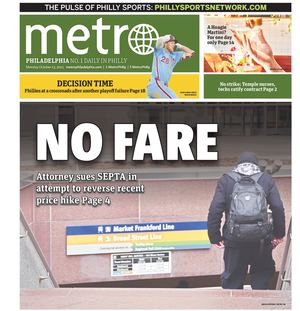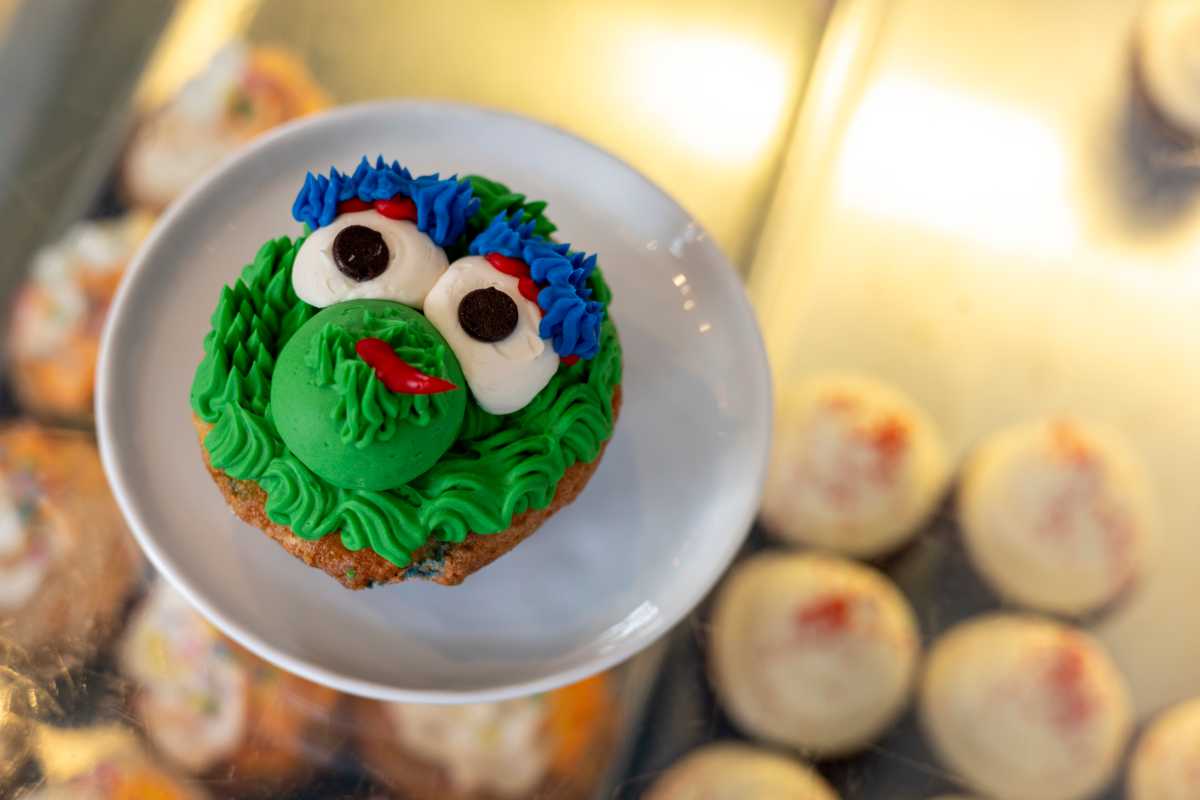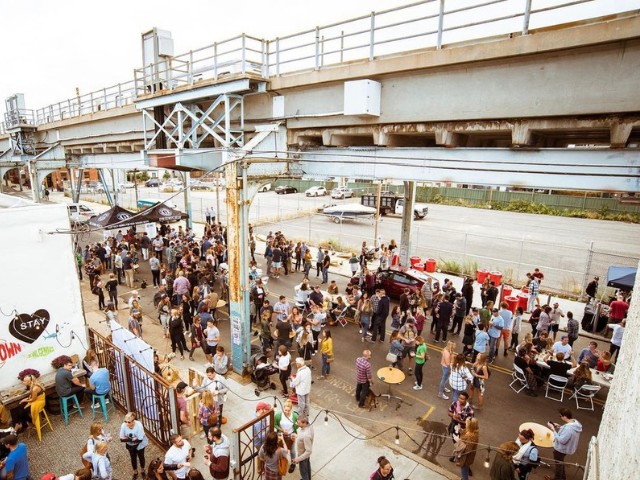This story was originally published by Technical.ly and Love Now Media, produced with the support of the Philadelphia Journalism Collaborative.
Artificial intelligence is whipping up beautiful pictures of cakes to salivate over.
But, at least for now, it cannot bake one. And even if it could, that cake would not be as delectable as what the pastry chefs at Cake Life Bake Shop in Fishtown, Philadelphia, can do.
Still, AI is encroaching on co-owners Nima Etemadi and Lily Fischer’s business. Customers perusing the internet looking for inspo photos of their dream birthday or wedding cake stumble upon AI-generated images that are, unbeknownst to them, beyond the laws of physics. Cake Life, gently, has to let them down, and hopefully direct them toward alternatives.
“When people send us AI-generated images that are not possible to be made out of actual cake materials, a lot of the time it’s just about setting expectations,” Etemadi told Technical.ly.
Take, for instance, the reference image below, recently sent to the bakery.
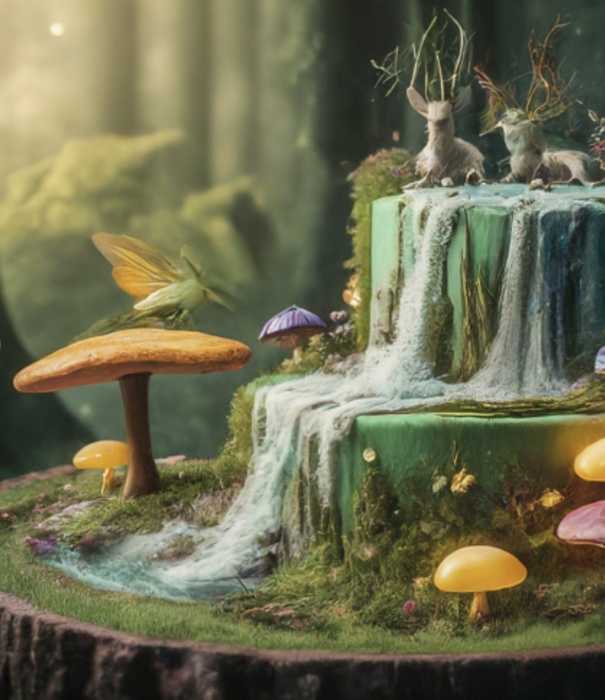
The glowing mushrooms, blurry wings of an insect in motion, misty waterfalls and fine, almost fuzzy foliage of the trees – these elements, which may very well be seen in the natural world, can’t be implemented on a cake, especially if you want the cake to not only be edible, but delicious.
For example, there’s Cake Life’s chocolate strawberry cupcake, a vegan chocolate cake filled with strawberry compote and topped with cream cheese frosting. With the jam running through it, every bite of rich cake is moist with a sugary zing from the dollop of nearly cloud-like icing perched on top.
Whereas the materials needed to even get close to recreating an AI-generated cake picture are not light, fluffy or moist.
Sometimes they’re altogether inedible. Bakers sometimes make various elements with icing-covered Styrofoam. Other times, they cover cake in loads of colorful fondant, a thick paste made of sugar and water that, while edible, really isn’t all that tasty.
“Cake that is designed to be architectural is not designed to be delicious. It’s designed to hold up in some shape, and so it can’t be that soft,” Etemadi told me.
The bakers do try, however, to make something work. Speaking about the cake designed from the images above, Brian Clores, the chief operating officer at Cake Life Bake Shop, said they did create a $200 6-inch waterfall and moss cake for the client.
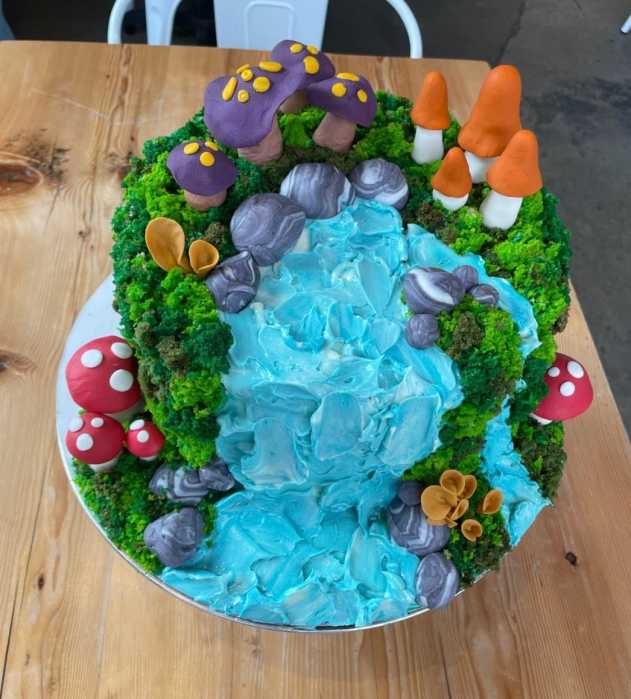
Helping a customer see for themselves why an AI cake just won’t work, though, is a big part of the battle.
Unrealistic expectations date way back before AI
AI isn’t only an issue at Cake Life, which opened in 2016 and already has quite the reputation, having baked cakes for Beyonce, Lizzo and Ali Wong.
A post on the r/Baking Reddit thread about the influx of AI-generated dessert photos online got nearly 3,000 upvotes and hundreds of comments. Several bakers (and a seamstress) complained about customers sending AI-generated images to their shops. The content creator behind A Cake To Remember LLC posted a YouTube video to her several thousand subscribers, telling them to be aware that some cake images are created using AI — and to adjust their expectations accordingly.
This all started before AI with the increasing popularity of Pinterest, Etemadi said. Customers would bring in reference photos they found on Pinterest that Etemadi and his staff bakers knew were actually fake cakes.
People’s unrealistic expectations were further exacerbated with the advent of trends like “real or cake,” whereby baking influencers on social media create mind-blowing cakes to look like everyday objects, like a glass of water, branded pints of ice cream or even onions. The trend was even turned into a Netflix TV show called “Is It Cake?” which premiered in March 2022.
As AI images flood our feeds right next to real photos, people also have a tough time determining which is which. A study from the University of Waterloo found fewer people than they expected could tell the difference between an AI-generated portrait and a real one. And the study participants were able to scrutinize the images for as long as they liked; a far different experience from someone scrolling through social media feeds or Google image searches.
What will surely benefit people as the pervasiveness of AI images escalates is to become better at recognizing an image created with artificial intelligence. For now, there are telltale signs. AI struggles with certain details. It’s bad at hands, so if there’s a baker’s with six fingers, it’s likely AI. Same with text and logos. Many times, an AI-generated image’s text will be gibberish. But not for long.
As generative AI gets better at creating images, these giveaways will become less obvious.
“AI is so great at opening up the possibilities for people. They can dream something and it can just exist when you ask AI to make it,” Etemadi said. But that’s only in two-dimensional space. When working with flour and sugar, things are a bit more complex.
Adjust your expectations
The staff at Cake Life have found it helpful to acknowledge how beautiful the image is before delivering the tough news and offering alternatives.
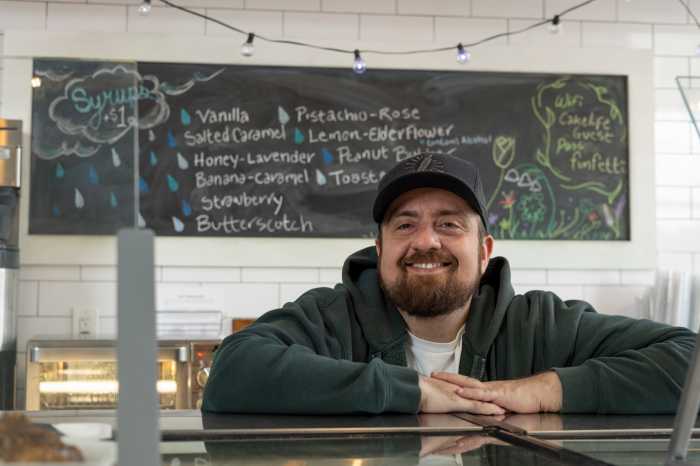
Sticker shock can also help point the customer in a more realistic direction. While Cake Life Bake Shop doesn’t specialize in hyper-realistic sweets, often the constraint to realizing the customer’s vision is actually the budget.
“People see these things and want [them], without realizing the thing they’re looking at would cost a couple thousand dollars to make,” Etemadi said. “There’s real sticker shock when these cakes meet reality … because it takes a lot of time and takes a really skilled hand.”
Content creators are showing the behind the scenes of what it would actually take to make that happen in trends online. Some look amazing, but they typically don’t speak about the price tag. Rosanna Pansino, a TV host, actress and author, who has 14.6 million subscribers on YouTube, recently paid bakeries to recreate several AI-generated cakes, with a starting price of $300 and going up to a whopping $3,000.
People are worried about the economy, their income and saving cash, Etemadi told Technical.ly. For instance, where once the bakery made lots of multi-tiered cakes for weddings, the demand for those has waned.
Etemadi nods towards Buddy Valastro, who hosted the TV show “Cake Boss” for nine seasons. In one of the episodes, Valastro talked about how the demand for huge wedding cakes that cost a few thousand dollars vanished after the 2008 financial crash and ensuing economic downturn. But the demand for small, individual cakes grew.
“Times might be tough,” Etemadi said, “but you still can have a birthday that you can put a few dollars together for.”
AI can be used in the kitchen beyond the creative process
While baking likely isn’t the first industry that comes to mind when you think about early adopters of AI and other cutting-edge technology, there are plenty of places in the kitchen that are benefiting from new tools.
According to Etemadi, there’s a lot of cool new technology for large bakeries that have multiple locations and can afford the expense. He mentions CyBake, a bakery management software service that allows bakers to use AI to predict demand and then optimize production and reduce waste.
From robotic systems equipped with sensors and tasked with precisely measuring ingredients to computer-controlled dough kneading machines and even the lofty-sounding near-infrared spectroscopy, which uses light waves to measure the composition of materials like fat, moisture and color, bakeries today are far from luddites.
It’s not just the kitchen that’s getting upgrades to contend with evolving technology and customer expectations. It’s equally as important for the business side.
For smaller bakeries, it feels like using “the best of the worst” to Etemadi, largely adapting point of sale software made for restaurants for their purposes in the bakery. Menu tech created for restaurants generally lacks the flexibility Cake Life needs in constantly changing their menu for seasonal offerings, like the Phillie Phanatic’s furry mug.

The bakery also uses a feature built for reservations for their pre-orders and Etemadi said it’s a clunky process for customers.
In both front and back of house, there’s an opportunity for tech to upgrade the experience — just maybe not taking over for human creativity, yet.
“It’s about marrying the possibilities,” Etemadi said, “with the reality of the customer’s vision.”

Metro Philadelphia is one of more than 25 news organizations powering the Philadelphia Journalism Collaborative. We do solutions reporting on things that affect daily life in our city where the problem and symptoms are obvious, but what’s driving them isn’t. Follow us at @PHLJournoCollab.
